Invasive Species Spotlight: Norway Maple
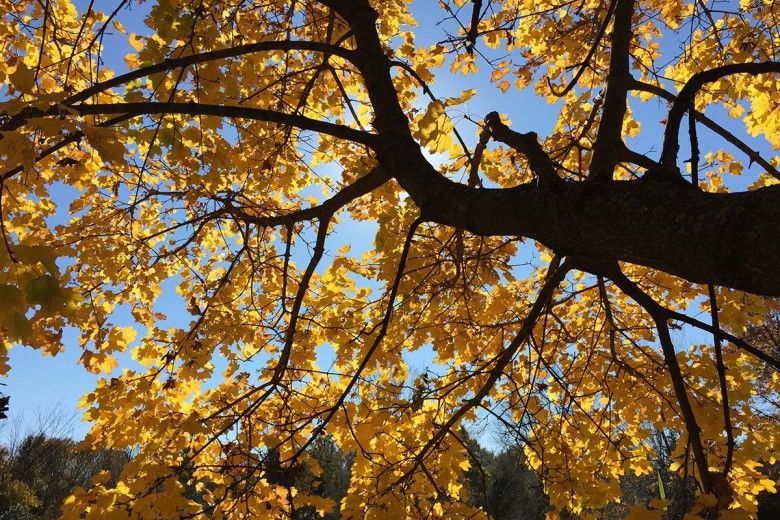
The Norway Maple (Acer platanoides) is a classic example of an invasive tree—with ties to the early American nursery trade, it was planted extensively in North America for its aesthetic appeal and horticultural value before eventually spreading into natural areas where it disrupts native plant communities.
Description
The Norway Maple is a medium to large deciduous tree with a mature height ranging from 40 to 90 feet depending on growing conditions. The main stem can reach five feet in diameter. Its waxy dark green leaves are opposite and palmately lobed. Lobes are pointed with smooth margins and one to three teeth on the sides. Leaves are usually large, sometimes reaching 10 inches in width and turn a vibrant yellow in the fall. Bark is light grey to brown with shallow furrows. Flowers appear in small clusters of 10 to 30 in early spring before the leaves emerge. Each flower is bright greenish yellow and about 8mm wide. Fertile flowers will become double winged samaras which mature throughout the summer before falling to the ground like a spinning propeller in the fall.
Norway Maple is sometimes confused for the native Sugar Maple (Acer saccharum), however there are some key differences. Norway maple leaves are usually larger and turn yellow in the fall while sugar maples turn orange or red. A more reliant way to tell these two species apart is to break off a leaf stem and take a look at the sap. Sugar maples have a clear sap that is sometimes difficult to notice. Norway Maples have a thick white sap as seen in the photo below. This trick might not work in late fall when maple trees pull the sap out of their leaves right before they shed.
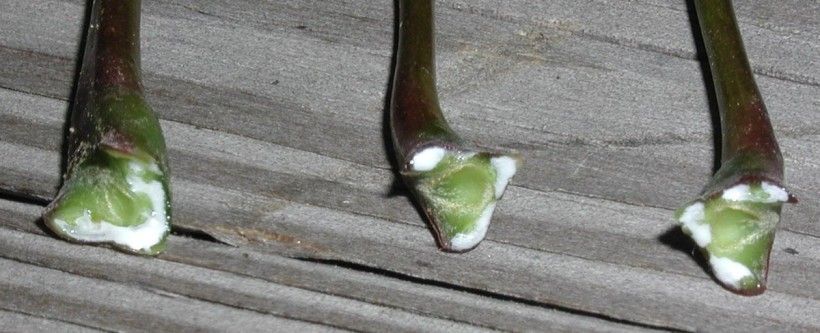
It is also worth noting the many different cultivars of Norway Maple available in the nursery trade. Some Norway maples are cultivated to have striated or dark-purple leaves. These cultivars have become very popular in housing developments but homeowners would be better off planting a native maple that provides similar beauty with much greater wildlife value. Some options are the sugar maple, red maple (Acer rubrum), and silver maple (Acer saccharinum).
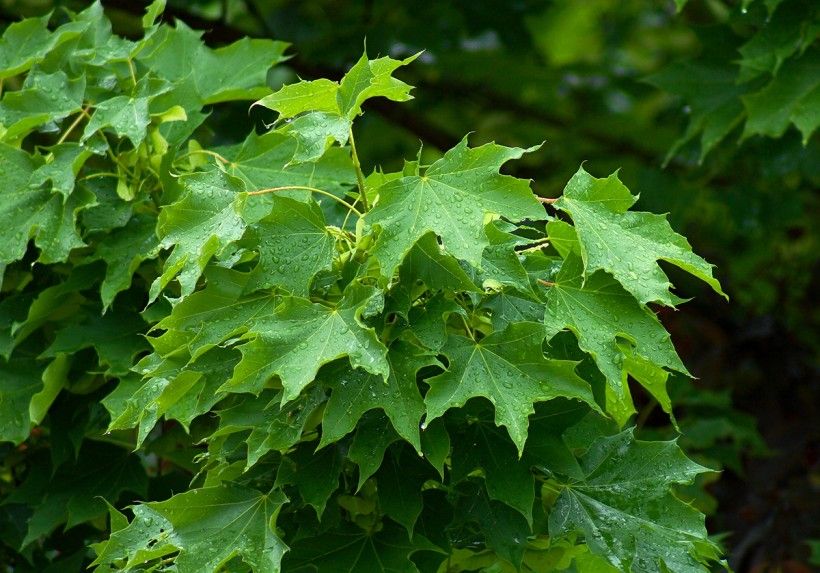
Origin
The first documented import of Norway maple into North America happened around 1756 when John Bartram received seedlings from England and began cultivating the species at his garden and nursery in Philadelphia. Not long after, Norway Maples appeared in nursery catalogs in New York City and northern California. This species became even more popular once it earned a reputation as an ideal street tree. Mature Norway Maples have a very stately shape with attractive fall color and provide excellent shade with their large leaves. They also grow very quickly and will tolerate tough urban conditions like compacted soil, air pollution, and limited root space. As such, they have been heavily planted in many cities throughout the United States and Canada, especially in the 1970s and 80s when elm trees where decimated by Dutch Elm Disease leaving many vacant tree pits to be filled with the popular Norway maple.
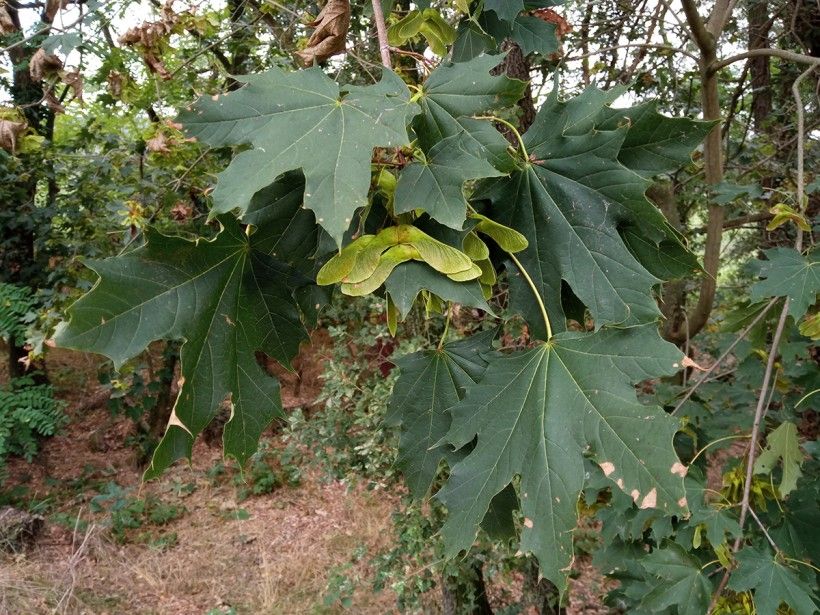
Invasive Nature
Once established in an urban or suburban setting, Norway maples will produce large quantities of seed that are carried by wind into adjacent natural areas. Unlike a lot of invasive species in our area, Norway maples aren’t necessarily an early succession plant—they don’t need recently disturbed sites to get established. These trees are very shade tolerant and will do best along forest edges or in the understory. This poses a problem for native understory plants that cannot compete with the relatively fast-growing Norway maple. Studies have shown significantly less species diversity underneath Norway Maples when compared to areas underneath native maples. This is likely attributed to drier, shadier conditions under Norway maples, but some studies have also suggested Norway maples release allelopathic chemicals into the soil that inhibit the growth of other plants.
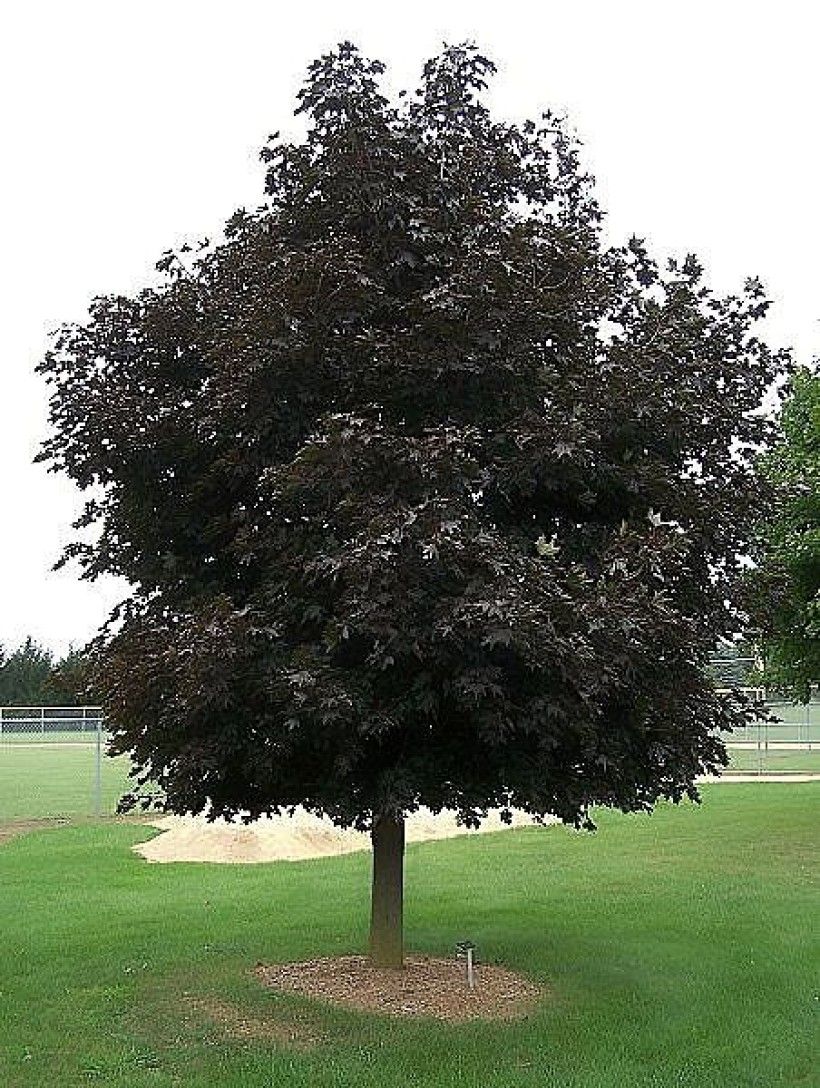
Control
Young trees can be removed manually by pulling or digging out the root system. Getting rid of mature trees becomes more challenging because of their size. One of the simplest methods for removing mature trees, outlined here by Penn State Extension, is the hack-and-squirt method. This herbicide application is perfect for an individual with limited equipment. The idea is to use a hatchet to make evenly-spaced incisions around the circumference of the stem and apply an herbicide in the incisions. The herbicide will make contact with the vascular tissue and be carried into the roots. This method is very efficient and greatly minimizes the chance of accidentally applying herbicide to nearby plants. Be sure to check the tree during the next growing season to ensure the herbicide application was successful. Dead trees can be left standing to provide animal habitat if they are far enough away from roads or structures. Recommended herbicides include glyphosate, triclopyr, and imazapyr. This herbicide application can be used on Norway maples in any season, but be cautious during very cold temperatures when herbicide can freeze and be less effective or difficult to work with. Always read and follow product labels when working with herbicide.
To learn more about Norway maple, check out our one-sheet summary here.
References:
- PA DCNR: “Invasive Plants of Pennsylvania: Norway Maple”
- Tree Physiology: “Norway maple displays greater seasonal growth and phenotypic plasticity to light than native sugar maple”
- Journal of Arboriculture: “History and Range of Norway Maple”
- Illinois Wildflower: “Norway Maple”
Header Image: Norway Maple fall color. Famartin, CC BY-SA 4.0, via Wikimedia Commons